With the Fuel EXe 9.9 XX1 AXS 2023, Trek enter our huge 2023 eMTB group test with their first ever Light-eMTB, which retails at € 14,499 and comes equipped with a TQ HPR 50 motor and matching 360 Wh battery. Above all, it’s supposed to convince with its discreet look and natural riding feel, but how does it fare against the competition?

18.9 kg in size L | € 14,499 | Manufacturer’s website
Last year, the Trek Fuel EXe was introduced as the first bike on the market with the new TQ HPR 50 motor. The drive system of the Bavarian tech manufacturer was developed in close co-operation with the American bike colossus and was initially covered by a three month exclusivity agreement. Trek’s yellow trail bruiser combines 150/140 mm of travel front and rear and doesn’t care about huge horsepower or a massive range. Instead, it was developed to deliver the most natural ride feeling and discreet look possible. In Trek’s portfolio, it sits right between Trek’s 160/150 mm, full-fat eMTB allrounder, the Rail, and their XC eBike, the E-Caliber XC, which employs a FAZUA Ride Evation 50 motor and combines 120/60 mm, at the front and rear. Now that the new TQ HPR 50 motor can be found on an increasing number of bikes, we couldn’t wait to see how the Trek fares against the new competition.


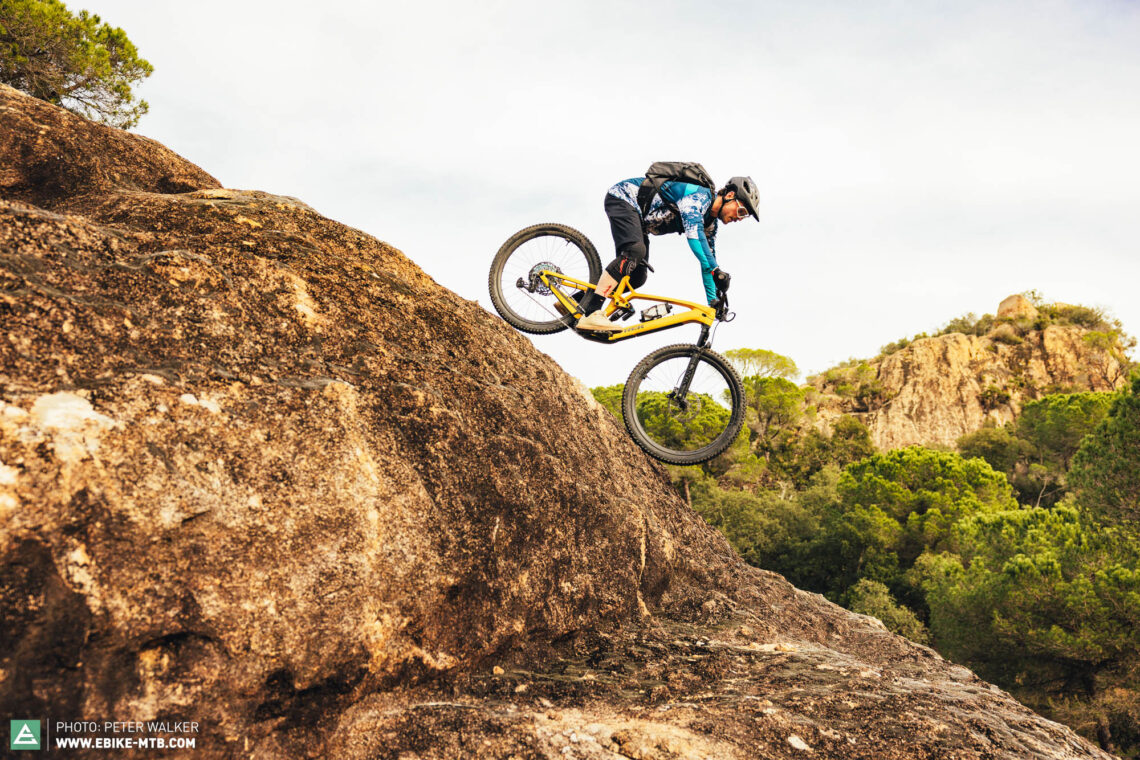
For an overview of the test fleet head to the group test: The best eMTB of 2023 – 30 models in review
To e- or not to e-? – How does the Trek Fuel EXe 9.9 XX1 AXS compare to the competition?
No, you’re not drunk and you’re not seeing double: the Trek Fuel EXe 9.9 XX1 AXS looks confusingly similar to its analogue counterpart, the Fuel EX. Trek have done a great job at concealing the motor in the frame, which was made easier by the drive system’s compact dimensions. The display sits flush with the top tube and lets you scroll between different display views, providing a whole bunch of information, including the selected support level, mileage and battery charge status in 10% increments. Compared to the other TQ bikes in this test, the Fuel EXe relies on its own display interface, which differs from the standard TQ version and is more intuitive to use. But that’s not all: Trek have managed to pack several extra functions into the Trek Central app, allowing you not only to display the usual riding data mentioned above but also to monitor the tire and suspension pressure in conjunction with the TyreWiz and AirWiz sensors. In addition, the app recommends an optimal suspension setting based on the rider’s weight. As if that wasn’t enough, Trek’s “Range Cloud” provides a visual estimate of the remaining range for each support level, displaying a radius on a map that shows how far you’ll get with the remaining range. The 360 Wh battery is integrated permanently into the slim down tube of the carbon frame. Like with the Haibike LYKE, the battery can either be charged directly on the bike via the charging port or removed from the down tube for external charging by removing two bolts. For epic backcountry expeditions, you can expand the battery with the optional 160 Wh range extender. The electronic SRAM XX1 AXS 12-speed drivetrain is wired straight into the main battery, allowing you to dispense with one of the AXS batteries. As a result, shifting is only an option with the motor turned on, but the system guarantees up to 300 gear shifts even once the main battery is dead.
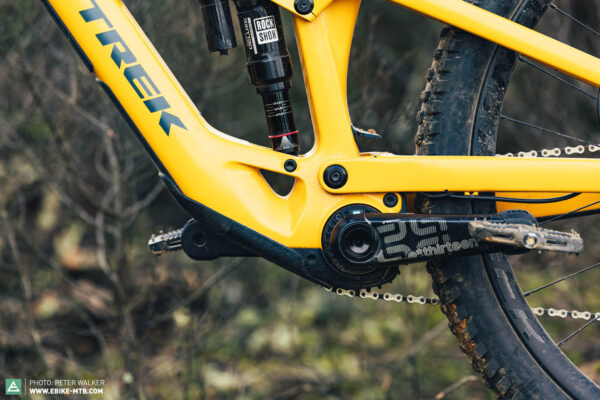
The TQ HPR 50 motor is just the size of a fist and integrated into the frame of the Trek Fuel EXe 9.9 XX1 AXS almost invisibly.
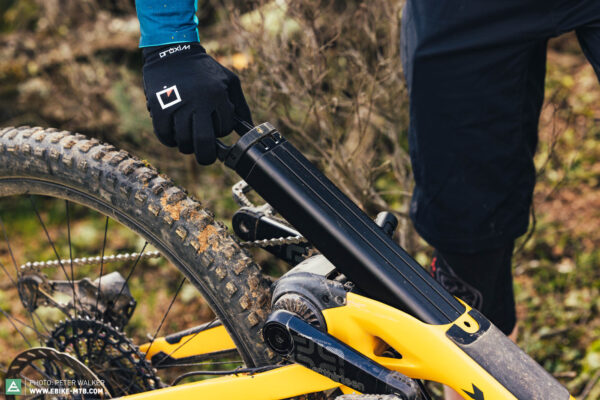
To remove the battery, you just have to undo two bolts.

No, we’re not talking about a lorry, but about Trek’s one-piece carbon cockpit which, at 820 mm, is the widest in the entire test field. Moreover, the one-piece construction doesn’t allow for fine tuning.
The one-piece Bontrager RSL carbon cockpit perfectly suits the slim frame silhouette of the Trek. However, the one-piece construction doesn’t allow for fine tuning, while the 820 mm handlebars are far wider than the average in this test. A basic multitool is hidden inside the stem while an additional tool mount on the underside of the top tube allows you to carry a spare inner tube directly on the frame. SRAM CODE RSC four-piston brakes with 200 mm rotors front and rear ensure powerful and reliable deceleration, but the brake lines rattle loudly against the frame. Trek’s in-house component brand Bontrager also provides the SE5 Team Issue tires, which might be a reasonable choice for clean singletracks, but are far too flimsy for heavy riders and mean shredders, who should upgrade to more robust tires with a tougher casing.
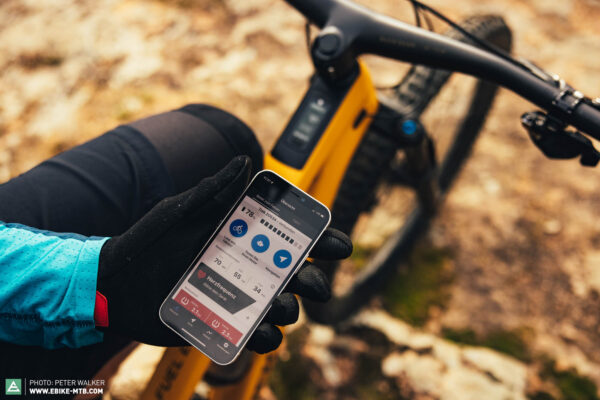
Unlike the other TQ bikes in this test, the Fuel EXe relies on its own interface, which differs from the standard TQ version and is more intuitive to use. On top of that, Trek’s Central app bundles all key functions in one single app.
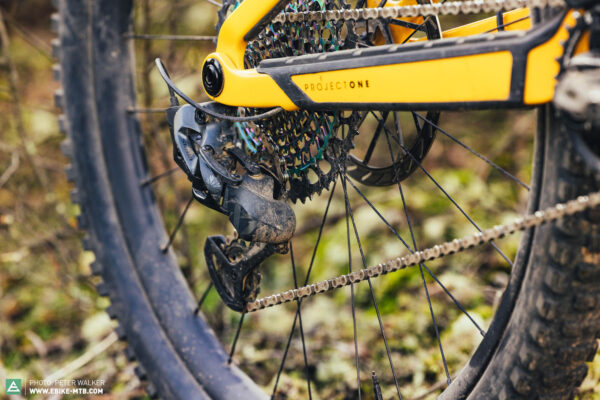
The SRAM XX1 AXS electronic rear derailleur is wired straight into the main battery, allowing you to dispense with one of the AXS batteries.
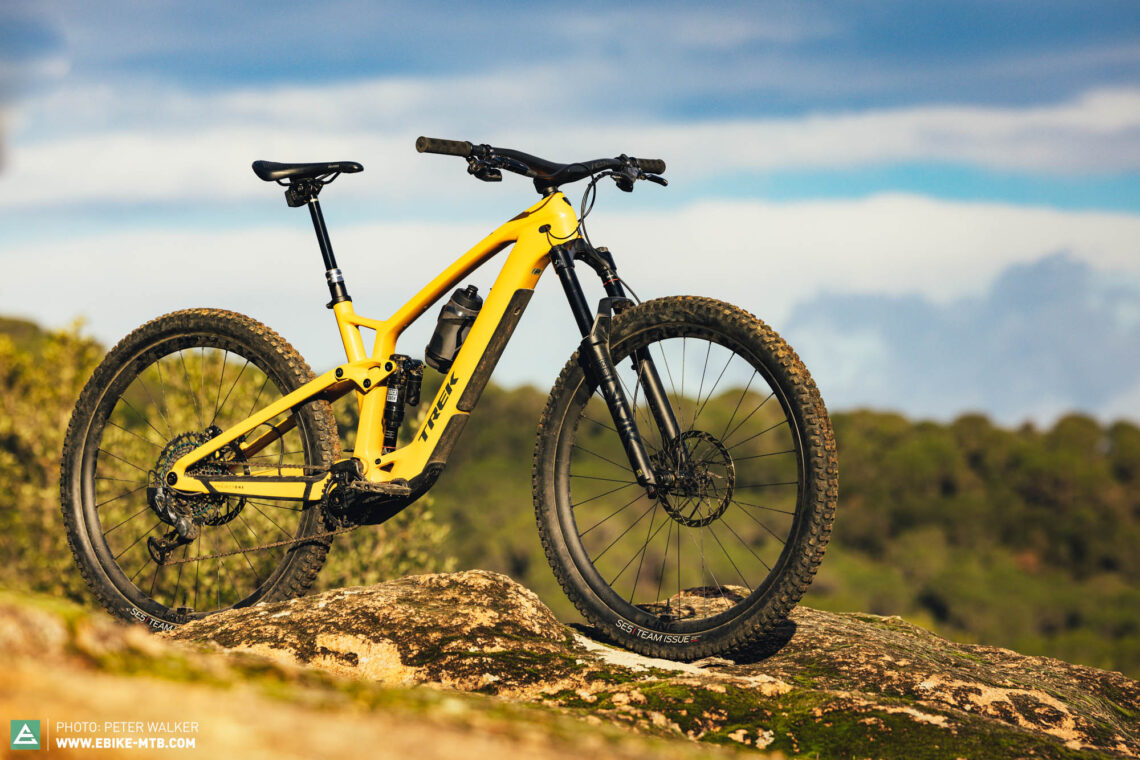
Trek Fuel EXe 9.9 XX1 AXS
€ 14,499
Specifications
Motor TQ HPR 50 50 Nm
Battery TQ HPR Battery V01 360 Wh
Display TQ 0-LED
Fork RockShox Lyrik Ultimate 2023 150 mm
Rear Shock RockShox Super Deluxe Ultimate 140 mm
Seatpost RockShox Reverb AXS 170 mm
Brakes SRAM CODE RSC 200/200 mm
Drivetrain SRAM XX1 AXS 1x12
Stem Bontrager RSL Carbon 45 mm
Handlebar Bontrager RSL Carbon 820 mm
Wheelset Bontrager Line Pro 30 29"
Tires Bontrager SE5 Team Issue/Bontrager SE5 Team Issue 2.5/2.5
Technical Data
Size S M L XL
Weight 18.9 kg
Perm. total weight 136 kg
Max. payload (rider/equipment) 117 kg
Trailer approval no
Kickstand mount no
Specific Features
Range-Extender
Toolmount
TyreWiz/AirWiz
integrated multitool
Tuning tip: Shorten the handlebars
Trail King – What is the Trek Fuel EXe 9.9 XX1 AXS capable of?
If you rolled up on your shiny new Trek Fuel EXe 9.9 XX1 AXS at the next group ride, your analogue mates wouldn’t believe how “fit” you are, because the TQ system is integrated almost invisibly into the frame and is as quiet as a mouse – the quietest motor in this test. In all situations, it responds sensitively and doesn’t buck you off the saddle like a Ducati on a dragstrip. On level ground, the Fuel EXe scores with a comfortable pedalling position that’s also suitable for long tours, but the wide handlebars put a lot of pressure on your hands. Riding uphill, the rear end bobs slightly, but generates a decent amount of traction. When the climb gets steeper, you’ll have to actively weight the front wheel to prevent it from lifting.
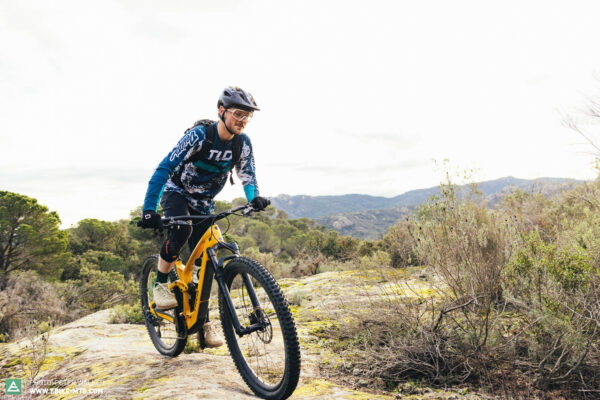
When negotiating technical climbs, you’ll have to actively weight the front wheel to prevent it from lifting.
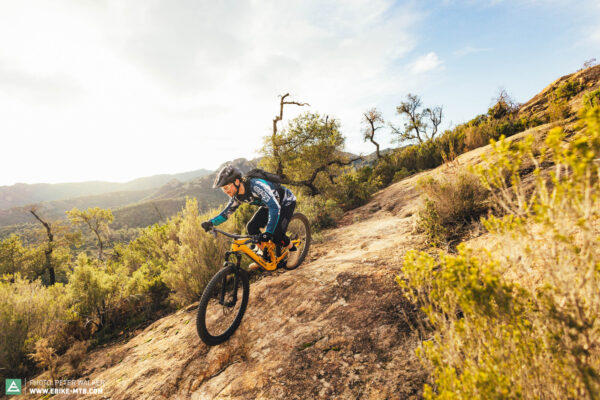
The stiff front allows you to hold bold lines but requires an experienced rider to handle the feedback.
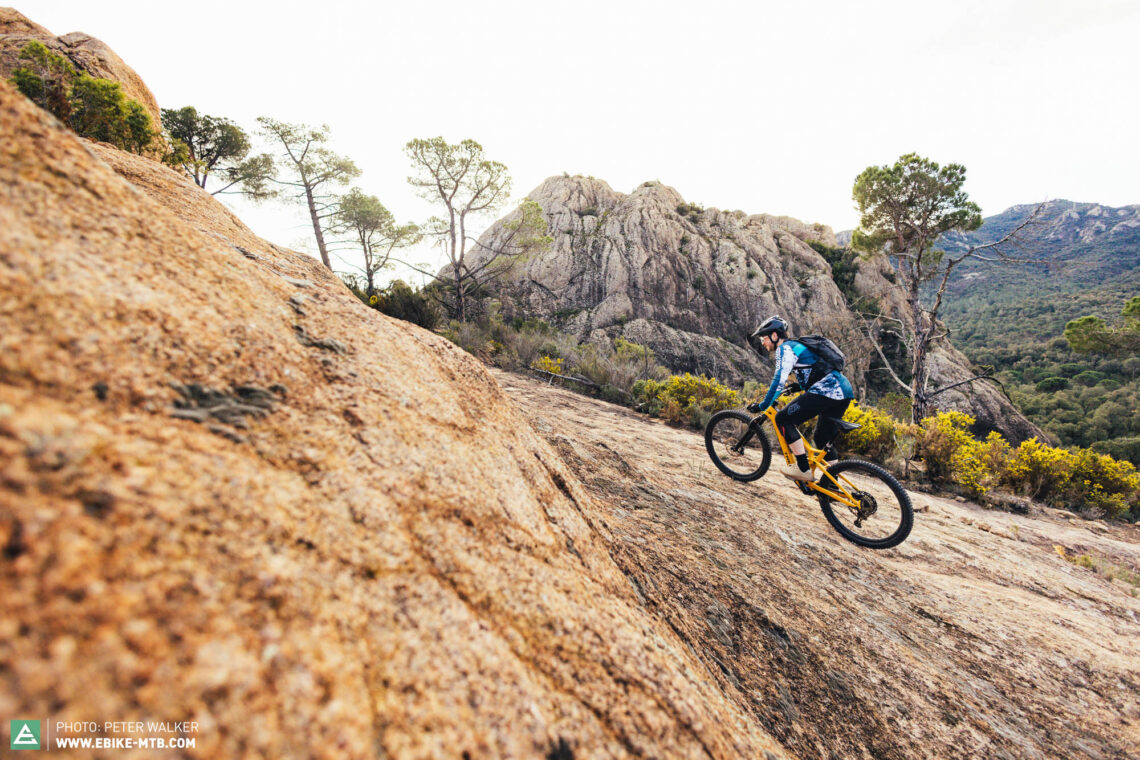
When gravity takes over, the Trek integrates you nicely between its big wheels. The weight is evenly distributed between the front and rear and, together with the intuitive handling, inspires good amounts of confidence, encouraging you to open the tap. The wide cockpit forces you relatively far forward, providing enough traction on the front wheel, even when carving through open, dusty corners at Mach 10. Before hitting narrow trails with tight corners, however, you should practise your aiming skills, because the wide handlebars require a very focussed riding style. The stiff front end makes it easy to commit to audacious, fun highlines but requires an experienced rider who knows how to handle the strong feedback. The suspension provides enough support to pop off rollers on flow-trails but still bails you out on botched landings. The Fuel EXe 9.9 XX1 AXS implements spontaneous direction changes just as willingly as the Orbea Rise but can’t quite keep up with the stoic composure of the FOCUS JAM² SL 9.9.
If you rolled up on your shiny new Trek Fuel EXe 9.9 XX1 AXS at the next group ride, your analogue mates wouldn’t believe how “fit” you are, because the TQ system is integrated almost invisibly into the frame and as quite as a mouse – the quietest motor in test.
| Size | S | M | L | XL |
|---|---|---|---|---|
| Seat tube | 380 mm | 410 mm | 435 mm | 470 mm |
| Top tube | 573 mm | 600 mm | 630 mm | 658 mm |
| Head tube | 100 mm | 110 mm | 110 mm | 120 mm |
| Head angle | 64.8° | 64.8° | 64.8° | 64.8° |
| Seat angle | 76.8° | 76.8° | 76.8° | 76.8° |
| Chainstay | 440 mm | 440 mm | 440 mm | 440 mm |
| BB Drop | 39 mm | 39 mm | 39 mm | 39 mm |
| Wheelbase | 1,188 mm | 1,217 mm | 1,247 mm | 1,276 mm |
| Reach | 428 mm | 453 mm | 483 mm | 508 mm |
| Stack | 620 mm | 629 mm | 629 mm | 638 mm |

Riding downhill, you’re integrated deeply into the bike and the Trek Fuel EXe 9.9 XX1 AXS inspires enough confidence to really open the tap.
Who should take a closer look at the Trek Fuel EXe 9.9 XX1 AXS and who should look elsewhere?
The Trek Fuel EXe 9.9 XX1 AXS is the ideal companion for sporty trail riders who are looking for a discreet Light-eMTB and have the skills to handle its direct feedback. Connectivity freaks will have the time of their life with the Trek Central app, which offers a huge range of functions to fine tune your ride down to the smallest detail.


Riding Characteristics
DESIGN
- unbalanced
- coherent
USER FRIENDLINESS
- cumbersome
- clever
VALUE FOR MONEY
- flop
- top
TREKKING & COMMUTING SUITABILITY
- low
- high
HANDLING
- demanding
- intuitive
FUN FACTOR
- boring
- lively
Intended Use
Gravel roads
Technical climbs
Flowtrail descents
Technical descents
Conclusions about the Trek Fuel EXe 9.9 XX1 AXS
Thanks to the quiet drive and near-invisible motor and display integration, the Trek Fuel EXe 9.9 XX1 AXS 2023 is hardly recognisable as an eMTB. On the trail, it convinces with intuitive handling and balanced weight distribution. The stiff cockpit ensures direct handling and plenty of feedback, which can be overwhelming for inexperienced riders. Overall, the Trek is an excellent partner for sporty trail riders who know how to deal with the direct handling.
Tops
- Seamless integration of the motor system
- Motor has a sporty, natural ride feeling
- Intuitive handling
Flops
- Brake lines rattle loudly against the frame
- One-piece cockpit doesn’t allow for fine tuning
You can find out more about at trekbikes.com
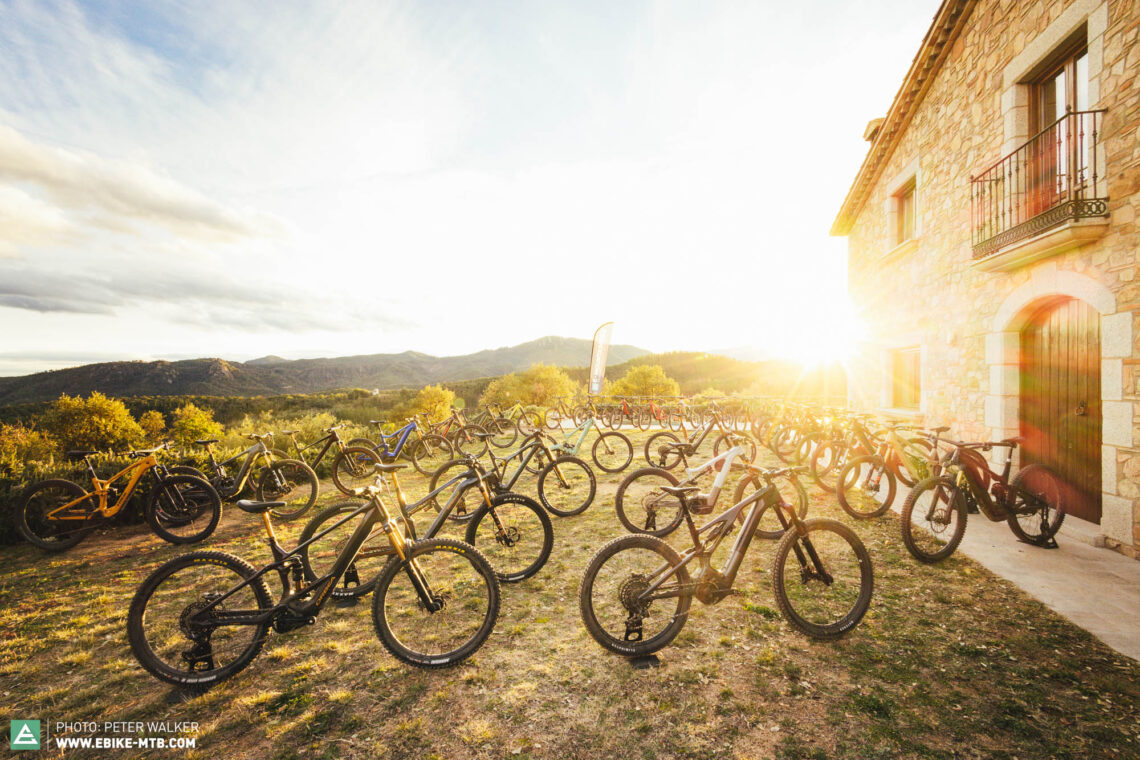
The test field
For an overview of the test fleet head to the group test: The best eMTB of 2023 – 30 models in review
All bikes in test: Berria Mako Hybrid GT LTD (Click for review) | Bulls SONIC EVO SL EN-1 (Click for review) | Cannondale Moterra Neo Carbon LT1 (Click for review) | Flyer Uproc X 9.50 (Click for review) | Focus SAM² 6.9 (Click for review) | Focus JAM² 6.9 (Click for review) | Focus Jam² SL 9.9 (Click for review) | Forestal Siryon Diōde (Click for review) | Giant Trance X Advanced E+ Ltd (Click for review) | Haibike Lyke CF SE (Click for review) | Ibis OSO (Click for review) | KTM Macina Prowler Exonic (Click for review) | MERIDA eONE-SIXTY 975 (Click for review) | Mondraker Crafty Carbon XR LTD (Click for review) | Moustache Samedi 29 Game 11 (Click for review) | Orbea Rise M-Team (Click for review) | Orbea WILD M-LTD (Click for review) | Pivot Shuttle SL Pro X01 (Click for review) | Pivot Shuttle LT Team XTR (Click for review) | Radon Deft 10.0 (Click for review) | Rotwild R.X735 Ultra (Click for review) | Santa Cruz Heckler MX XO1 AXS RSV (Click for review) | SCOTT Lumen eRide 900 SL (Click for review) | Simplon Rapcon Pmax TQ (Click for review) | Specialized Turbo Levo Expert (Click for review) | Transition Repeater AXS Carbon (Click for review) | Thömus Lightrider E Ultimate (Click for review) | Trek Fuel EXe 9.9 XX1 AXS | UNNO Mith Race (Click for review) | Yeti 160E T1 (Click for review)
Did you enjoy this article? If so, we would be stoked if you decide to support us with a monthly contribution. By becoming a supporter of E-MOUNTAINBIKE, you will help secure a sustainable future for high-quality cycling journalism. Click here to learn more.
Words: Mike Hunger Photos: Peter Walker









